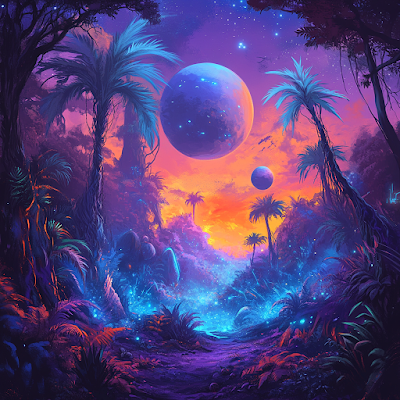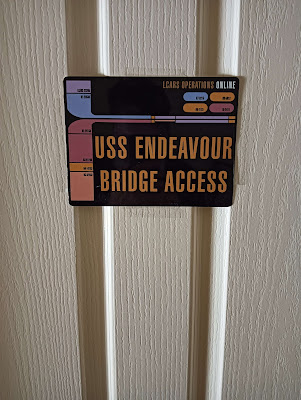One of the most fulfilling (and challenging) parts of writing a space opera is creating a diverse cast of characters who feel as real as the universe they inhabit. Each character in Merchant of Vision has their own motivations, histories, and relationships that intertwine with the story’s protagonist, Kars Vandor. Today, I wanted to share a sneak peek into the Dramatis Personae for Merchant of Vision—a partial character list (without spoilers) that brings each individual to life and gives readers a glimpse into their roles within the narrative.
With the galaxy as the backdrop, Merchant of Vision centers around loyalty, ambition, survival, and the ties that bind people together in the harsh realities of frontier life. Here’s a look at some of the major and minor players who make up this universe:
Dramatis Personae
Kars Vandor
Role: Protagonist
Relationships: Son of Yasmin Vandor; love interest of Kris Harron.
Traits: Ambitious, determined, resourceful, and empathetic, but haunted by his harsh upbringing.
Background: A 19-year-old welder on the mining colony world of Obarwinko, Kars dreams of escaping his difficult life. Born into hardship, he’s driven to make a name for himself among the stars and escape the shadows of his past.
Kris Harron
Role: Love interest of Kars Vandor
Relationships: Daughter of Aldrick Harron, a Terran naval hero, ; deeply committed to Kars.
Traits: Intelligent, loyal, brave, and driven by a sense of duty.
Background: An aspiring naval officer with dreams of attending the Naval Academy, Kris often finds herself at a crossroads between her loyalty to Kars and her own ambitions to honor her father’s legacy.
Tannika Na'ir
Role: Mysterious Esper ally
Relationships: Espionage agent connected to Duchess Zhōu Yuèguāng; recruited for a mission on Port Obarwinko.
Traits: Calculated, skilled, secretive, and Esper sensitive.
Background: A noblewoman with psionic abilities, Tannika is an Esper with a past filled with espionage. She becomes central to Kars's journey, leading him into dangerous situations.
Duchess Zhōu Yuèguāng
Role: A powerful ally with her own agenda.
Relationships: Tannika’s employer; strategist against the Felis threat, regent of the Varala Drift subsector.
Traits: Commanding, shrewd, and willing to make morally ambiguous choices
Background: Once a naval officer, now a noble strategist, the Duchess is fiercely committed to fortifying humanity’s hold in the subsector, even when her missions blur ethical lines.
Moxxu
Role: Uneasy ally
Relationships: Former Felis military member seeking asylum
Traits: Skilled navigator, resourceful, and wary
Background: A Felinoid astrogation officer with a complicated past. Moxxu’s presence creates tension, particularly with Kris, who distrusts her due to her Felis heritage.
Yasmin Vandor
Role: Kars’s mother; a tragic figure in his backstory
Relationships: Mother of Kars; former captive of Laze Rezal.
Traits: Resilient, caring, and willing to make sacrifices.
Background: A former prostitute on New Asia who escaped to Port Obarwinko, Yasmin’s sacrifices drive Kars’s ambition and his will to rise above his origins
Laze Rezal
Role: Antagonist
Relationships: Yasmin’s former employer.
Traits: Cruel, manipulative, and controlling
Background: A powerful drug dealer who claimed Yasmin as his own. Yasmin’s act of self-liberation from him sets the stage for Kars’s early life.
Maze Rezal
Role: Secondary antagonist
Relationships: Son of Laze Rezal; holds a grudge against Kars and Yasmin.
Traits: Aggressive, cunning, and vengeful
Background: As a dark mirror to Kars, Maze’s resentment and desire for revenge add complexity to the story.
Sector Duke Ziven Croyle
Role: Primary antagonist; upholder of the established order
Relationships: Political adversary; antagonist to the Duchess’s goals.
Traits: Tyrannical, arrogant, and resistant to change
Background: Croyle is intent on keeping colonists like Kars under control, representing the systemic forces working against him
Vek Coris
Role: Rival and antagonist
Relationships: Wealthy noble with an interest in Kris.
Traits: Arrogant, manipulative, and charismatic
Background: A noble who enjoys taunting Kars and attempts to win Kris’s affection, Vek’s wealth and influence make him a significant obstacle.
Brynn Talon
Role: Agent and master schemer
Relationships: Operative within the Duchess’s circle.
Traits: Ambitious, deceptive, and clever
Background: Brynn was born on an extremely tech poor world and she sees technology as the route to power and riches.
Setara Cho
Role: Informant and antagonist
Relationships: Broker on New Asia with connections to the Chin Gang
Traits: Cunning, self-serving, and untrustworthy
Background: Operating within the red-light district, Setara poses a constant threat to Kars, especially concerning his safety.
Dorik Keth
Role: Supporting character and Armsman
Relationships: Armsmaster; friend to Kars
Traits: Skeptical, and practical
Background: Dorik serves as a grounding influence on Kars, often challenging his plans with a skeptical perspective.
Celia Talleron
Role: Logistics manager and stabilizing influence
Relationships: Supporter of Kars in the crew
Traits: Rational, calm, and reasoned
Background: Known for her level-headedness, Celia’s presence helps to balance the crew, offering stability amidst chaos.
Ilias Gamberu
Role: Tech expert
Relationships: Friend to Kars
Traits: Optimistic, expressive, and resilient
Background: A former gambler with tech skills, Ilias brings humor and hope, boosting morale during dark times.
Sister Bevel Moray
Role: Spiritual guide
Relationships: Advisor to Kars
Traits: Wise, compassionate, and insightful
Background: Bevel’s teachings influence Kars’s understanding of leadership and his purpose in the universe.
Saow Maak
Role: Pragmatic ally and Mentor
Relationships: Salvage yard owner aiding Kars
Traits: Independent, resourceful, and aloof
Background: Saow Maak is a rugged alien survivor of the frontier, providing Kars with essential help while maintaining an emotional distance.
The Heart of the Galaxy: An Ensemble of Heroes, Rivals, and Allies
Each of these characters adds depth and richness to Merchant of Vision, bringing their own unique perspectives, skills, and challenges. Together, they build a universe that feels alive, reflecting the complexity, struggle, and resilience that define life on the frontier.
I hope this behind-the-scenes glimpse into the Dramatis Personae helps you get to know these characters before you meet them in the story. Their journeys, alliances, and conflicts are all integral to Kars Vandor’s quest, shaping the universe of Merchant of Vision in ways both profound and unexpected.




















.webp)




